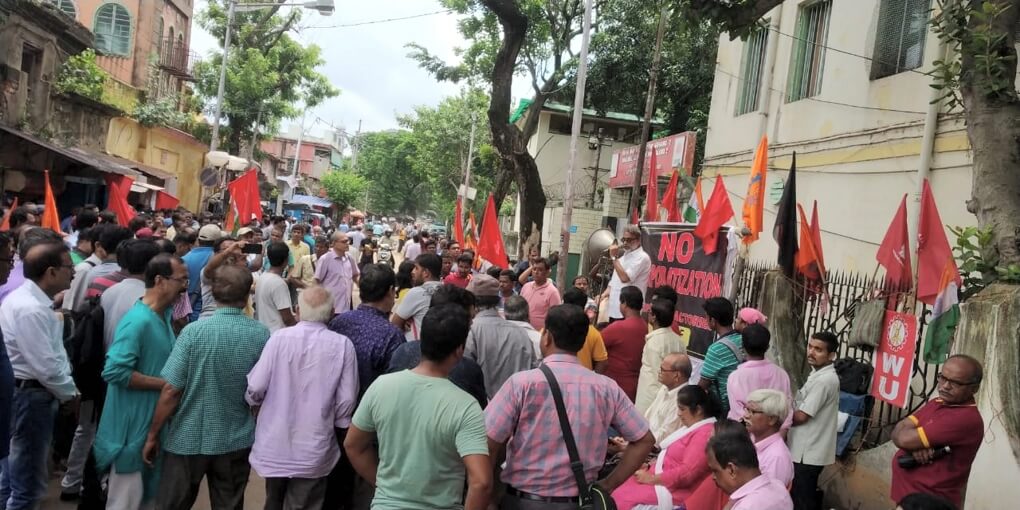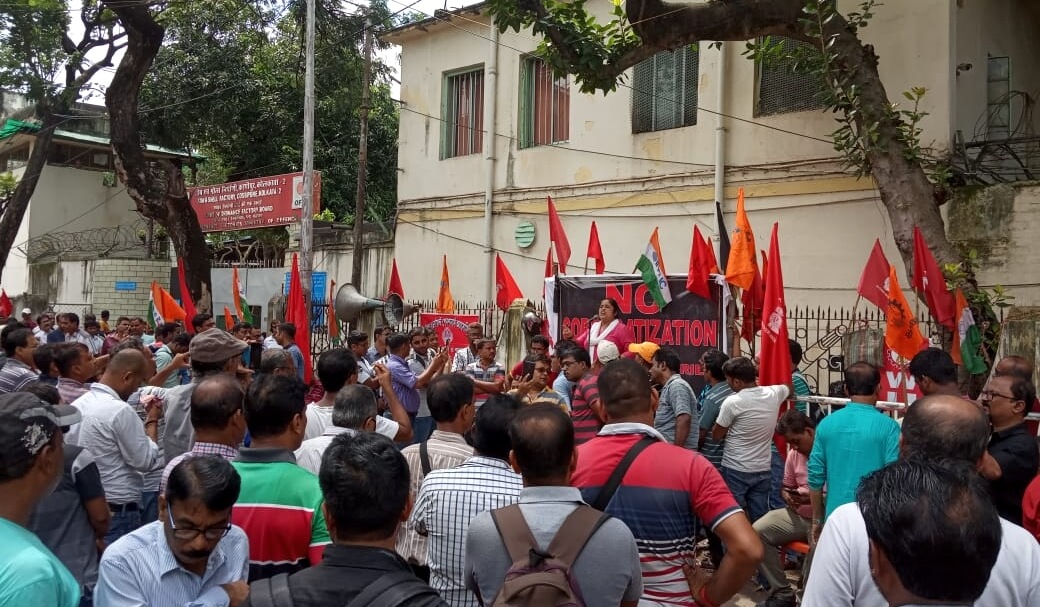Ordnance Workers Show the Way

AS the Modi-Shah government completes the first three months of its second term, the cat is out of the bag. However much the government may want people to cheer for its Triple Talaq and Kashmir moves and forget all else, more and more people across India are now actually talking about the devastating impact of economic slowdown. The belated admission by the finance minister and the massive diversion of more than Rs 176,000 crore of RBI surplus to the central exchequer have only corroborated the growing public perception of acute economic crisis.
For the government and private corporations, recession means bailout packages for the rich and austerity measures for the poor, privatisation of public sector units and curtailment of labour rights. The working people therefore have to be extra alert and determined to defend their rights and interests. The unprecedented total strike of Ordnance Factory workers for full five days supported by a daylong solidarity hunger strike by railway production unit workers has set the right tone for the working class response to the current crisis and the Modi government's attempt to transfer its burden on the people.
The five-day strike by the entire workforce of India's Ordnance Industry from August 20 to 24 will remain an important milestone in India’s working class movement. The government's move to open up the defence sector for 100% FDI (foreign direct investment) and reorganise defence production under a corporation is a clear indication of privatisation of this strategic sector. India is already the biggest arms importer of the world; with FDI and corporatisation/privatisation India's integration with the global war economy and military-industrial complex will be further stepped up. Against this backdrop, it was great to see the ordnance industry workers announce a monthlong strike against this ominous plan of the government.
The deep resentment and fighting mood of the workers compelled all federations including the pro-BJP Mazdoor Sangh join the strike. The strike which continued for five days before being called off following an agreement between the federations and the government witnessed near total participation by the entire workforce of the 41 Ordnance Factories and related offices.
The Railway Production Unit workers, faced with a similar threat of corporatisation and privatisation, chipped in with a one-day solidarity hunger strike. Workers and employees of the financial sector and activists of all central trade unions stood by the ordnance workers in this historic strike. With the government agreeing to examine all concerns raised by ordnance workers, the federations thought it proper to call off the strike after five days. While the issue thus remains to be clinched, the working class has clearly demonstrated its readiness and resolve to resist the privatisation drive of the Modi government.

What makes the ordnance workers' strike really historic is the prevailing political situation and the deepening economic recession. In its second term, the Modi-Shah government has been bulldozing the parliament and the people from day one. The stunning announcement to revoke Article 370 and dismember the state of Jammu and Kashmir into two Union Territories came as the climax of this all-out onslaught. The Sangh-BJP brigade has been busy celebrating this offensive on the streets while the opposition has clearly stood divided and demoralised inside the parliamentary arena. The Ordnance Strike assumes great significance against this backdrop by bringing the opposition of the people and the organised working class to the fore.
The Modi machine runs on the rhetorical fuel of nationalism and every opposition to the government is sought to be silenced and suppressed by dubbing it 'anti-national'. Ironically enough, this constant invocation of the chant of nationalism in politics is accompanied by a relentless war on nationalisation and public sector in the economic arena.
The Sangh-BJP propaganda projects Modi as India's strongest ever Prime Minister who is taking India to new heights of strength. But a close look at the economy tells us that India has been rendered most vulnerable with a falling currency, declining economic growth and exports and burgeoning unemployment. And on the social front, the country is being steadily weakened as the social fabric is torn apart by communalism and caste oppression and our cultural diversity and federal framework are trampled by an increasingly centralised state and its agenda of all-out homogenisation.
A powerful resistance of the people alone can save India at this juncture - and however much the dominant media may try to black out the protests in Delhi against the demolition of the Ravidas temple, the strike of the Ordnance workers, or countrywide solidarity actions with Kashmir, India of a billion-plus freedom-loving and democracy-loving people is surely fighting back.
Charu Bhawan, U-90, Shakarpur, Delhi 110092
Phone: +91-11-42785864 | +91 9717274961 E-mail: info@cpiml.org

